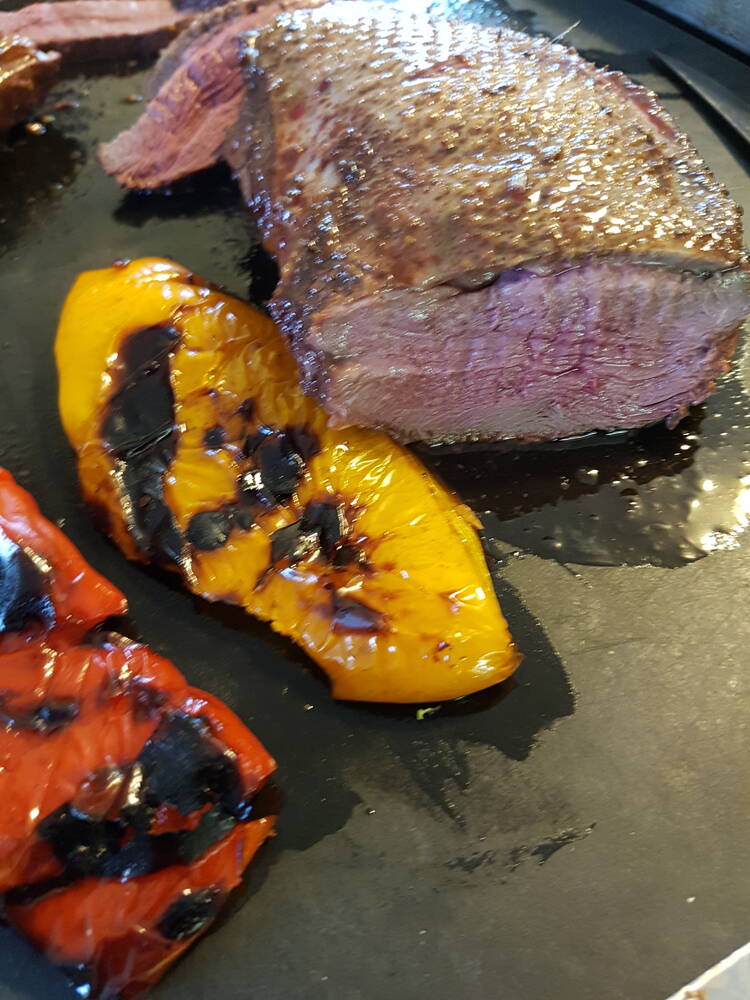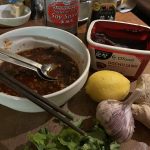Beet borscht is a peasant soup enjoyed by most East European cultures. Recipes vary from region to region, family to family, and were passed down from mother to daughter as the generations sat together and prepared food in humble kitchens. My background is Ukrainian and I learned to make beet borscht from my baba (grandmother) in the 1950s on the family farm. She told me, “Borscht is not just a recipe, it’s about beets plus what you have on hand. We use everything and waste nothing.” Her teaching continued as we peeled, chopped and shredded the vegetables. “Remember to always begin with a tasty stock. It is a fortunate woman who can always start her borscht with a rich broth made from meaty bones. But if you are not so fortunate, the vegetables will make their own broth while cooking together in the water. Toss in a few bits of leftover meat if you can.” In a whisper she would add, “And always remember to add my secret herb. This one. Don’t tell.”
Read Also

Giant Canada geese have gone wild in Manitoba
Giant Canada geese are seemingly everywhere and can be fine table fare for local hunters, but 70 years ago, they were borderline extinct.
I should mention that Baba had not developed a habit of relying on supermarkets for fresh meat or produce. However, she empathized with the city folk who did not have a garden and livestock. The grocery store was the best way for most modern women to have fresh meats and vegetables. But her empathy stopped at the rows of canned soups. “Why would people choose canned soups over making their own, real, homemade?” Baba would ask. “Where’s the love in a can, where’s the family tradition?
“In the old country,” she continued, “the borscht recipe varied from season to season according to the provision of God.” First there was spring borscht. It used only the tender first stems and leaves of the beets plus the remains of last summer’s hardy vegetables from the root cellar and meat from the larder. Then, it was seasoned with the first herbs of spring and soured with leaves of wild sorrel from the back woodlot. Tart, lemony, leafy sorrel was regarded as a spring tonic to cleanse the blood and rejuvenate the body. The resulting soup was pink, not red. This paler version of beet borscht only hinted at the richer version to come in the months ahead.
Summer borscht would be increasingly luxurious as more vegetables were ready from Baba’s kitchen garden. It still contained beet stems and leaves, but now the first sweet, tender bulbs of beets were shredded and added. Each in their season, other vegetables took a place in the crimson soup; snap beans, peas, young carrots, root parsley, corn, onion and more. All these were gently simmered in a meaty broth. Knowing hands tossed in parsley, dill, garlic, thyme and coriander for the perfect heavenly aroma and flavour.
Fall produced the large maroon beets and the darkest-red borscht which in the simmering soup pot turned all the other vegetables the same dark colour. What a majestic soup! Dark. Rich. Nutritious. Soured with a sprinkle of vinegar and crowned with a dollop of sour cream. A legacy in a soup bowl passed from generation to generation. Each recipe unique. Full of body-sustaining goodness. The provision of a gracious God; brought to a family table by hard work and loving hands.
Few of us remain who make soups the way our foremothers did. Be it borscht or another traditional recipe, our culinary heritage is slipping away because few of the young take time to sit with us and learn. Perhaps, if there is an upside to the current economic crisis and environmental difficulties, it is that people are becoming concerned about how we will fill our bellies, afford to run our homes, raise our families and live well into old age. We would be wise to hear the words of my baba; “Use everything and waste nothing.” To change our wasteful ways and hurried habits, sit in our grandmothers’ kitchens and learn. Learn to put love and a legacy in a soup bowl.
– Diane Gourluck writes from Winnipeg














